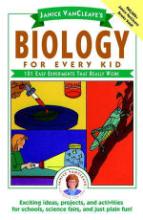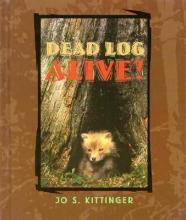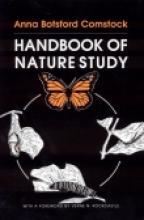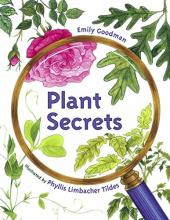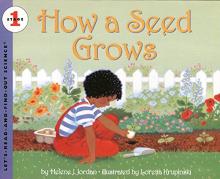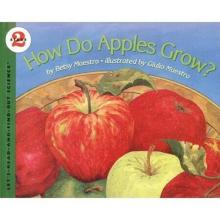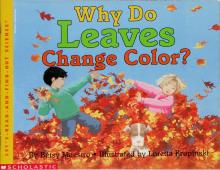Plant Life and Fungi
Biology for Every Kid
In its segment on "Experiments that Teach Us About Ourselves: The Amazing Human Body" this book provides 35 experiments about the body (the other segments of the book are about plant and animal life. While certainly not a comprehensive anatomy course, the book does provide interesting and simple experiments (which can easily performed at home with fairly ordinary materials) that would provide a helpful supplement to the study of anatomy.
Approximately one third of this book is devoted to "Experiments for the Beginning Biologist: The World of Plants." In the typical Van Cleave style, this segment provides 35 experiments relating to plant life that are simple and informative (and can easily be done in the home). Most experiments are designed to demonstrate certain properties of plant life (such as osmosis and diffusion, what causes plant stems to wilt, what makes plants burst when over-watered, and how water is transported through plant stems). Other experiments determine certain questions such as how plants take in nutrients and whether it matters which direction seeds face when they are planted. Each experiments concludes with an explanation as to the "why" of the results. I find these simple but very helpful (even for moms!).
Another third or so of this book is devoted to "Experiments in the Animal Kingdom: Introductory Zoology." In the Van Cleave style, this segment provides simple experiments (easily performed at home) involving molds, fungi, mini-organisms, yeast, fireflies, butterflies and moths, spiderwebs, crickets, grasshoppers, flies, goldfish and earthworms. In addition to experiments involving observation and/or manipulation of these small creatures, you will find experiments which "illustrate" properties of creatures (such as a camouflage and suction) without actually working with animals.
Dead Log Alive!
This book provides an interesting and detailed look at what comes to live in and around a dead log – woodpeckers, squirrels, mushrooms, fungi, moss, molds, porcupines, foxes, snakes, scorpions, millipedes, centipedes, pill bugs, salamanders, ants, termites, and beetles. Includes many interesting color photos and details about each species, how to tell them apart and much more. The book also includes an index, a glossary and suggestions for further reading.
Handbook of Nature Study
This is a very informative handbook on a large portion of nature, originally written for elementary school teachers. It covers wildlife, insects, farm animals, birds, fish, trees, flowers, weeds, vegetables, rocks, minerals, soil, climate, weather, magnets, the sun, moon, planets of our solar system and much more. According to the 1986 foreword, most of the living things described are common in the northeastern states of the U.S. but it covers a lot of material that would be helpful in other parts of the country as well. I've hardly begun to use this resource, but it looks like an excellent reference for all of those questions children want to know about the world around them. It can also be used as a teaching tool and studied more systematically as there are simple lessons designed to be used with children included with each subject. As the lessons are designed to work with real observation of the plants, they are particularly appropriate for a home school. The book is profusely illustrated with black and white photos. I would guess that there's an average of two photos per page. The language is a little archaic and some of the words would be a little difficult for younger children.
Copyrights 1911/1939
Plant Secrets
I confess I have a stack of books here waiting... some about libraries under different themes. Alas, the warmth today brings our minds to travel towards a green world, full of sunshine and growth.
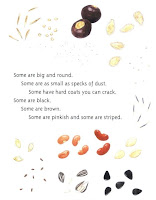
That, coupled with my 4th grader exclaiming, "Mom, you should blog about this nice book!" has me posting this gem found at the library under new books just yesterday! She is an avid picture book reader and her enthusiasm for this colorful, plant-full book alone is a thumbs up for me!
Product description:
Plants come in all shapes and sizes, but they go through the same stages as they grow. Using four common plants, young readers learn about a plant's life cycles. Simple text and colorful illustrations show the major phases of plant growth: seed, plant, flower, and fruit. Back matter offers more information on each plant, as well as on each stage of growth.
How a Seed Grows
A very simple, charming book that explains to young children what seeds are and takes them through the development of some bean seeds. The growth present each day is illustrated in the book and the child is invited to try grow the beans themselves and watch the progress in real life. The book also introduces children to different kinds of seeds (for trees, flowers, vegetables, etc.), and how each seed will grow into the same kind of plant that it came from, and the basic things necessary to make a plant grow.
How do Apples Grow?
The development of apples is presented, from leaf and flower buds in the winter, thru blossoms in the spring, pollination and the actual growth of the apple. In addition to beautiful scenic pictures of trees in blossom and bees pollinating the trees, there are more technical drawings which illustrate the parts of a flower, show flowers in the different stages of development and show the connections between the original blossom and the ripe apple. The text also introduces some important terminology that will be useful in later science studies (pollen, stamen, pistil, etc.). Overall, a very nice and useful book.
Why Do Leaves Change Color?
Our family has really enjoyed this book which explains why leave fall off the trees before winter, where the different colors come from, how weather affects the brilliancy of the colors and lots more. It's written in a very simple manner, so that it's quite understandable even for preschoolers or kindergarteners, and yet it contains substantial information so that even moms (like me) realize that they don't know everything : ) You'll also find labeled pictures of the leaves from different kinds of trees, a cross section of a leaf, an explanation of how trees make food, and how to make leaf rubbings and preserve leaves by ironing them between sheets of waxed paper.

